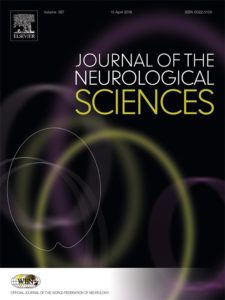Objectives: The Sports Concussion Assessment Tool 2 (SCAT2) and King–Devick (K–D) tests have both been proposed as sideline tools to detect sports-related concussion. We performed an exploratory analysis to determine the relation of SCAT2 components, particularly the Standardized Assessment of Concussion (SAC), to K–D test scores in a professional ice hockey team cohort during pre-season baseline testing. We also examined changes in scores for two athletes who developed concussion and had rink-side testing.
Methods: A modified SCAT2 (no balance testing) and the K–D test, a brief measure of rapid number naming, were administered to 27 members of a professional ice hockey team during the 2011–2012 pre-season. Athletes with concussion also underwent rink-side testing.
Results: Lower (worse) scores for the SCAT2 SAC Immediate Memory Score and the overall SAC score were associated with greater (worse) times required to complete the K–D test at baseline. On average, for every 1-point reduction in SAC Immediate Memory Score, we found a corresponding increase (worsening) of K–D time score of 7.3 s (95% CI 4.9, 9.7, pb0.001, R2=0.62, linear regression, accounting for age). For the overall SAC score, 1-point reductions were associated with K–D score worsening of 2.2 s (95% CI 0.6, 3.8, p=0.01, R2=0.25, linear regression). In two players tested rink-side immediately following concussion, K–D test scores worsened from baseline by 4.2 and 6.4 s. These athletes had no differences found for SCAT2 SAC components but reported symptoms of concussion.
Conclusions: In this study of professional athletes, scores for the K–D test, a measure for which saccadic (fast) eye movements are required for the task of rapid number naming, were associated with reductions in Immediate Memory at a pre-season baseline. Both working memory and saccadic eye movements share closely related anatomical structures, including the dorsolateral prefrontal cortex (DLPFC). A composite of brief rapid sideline tests, including SAC and K–D (and balance testing for non-ice hockey sports), is likely to provide an effective clinical tool to assess the athlete with suspected concussion.
Summary Points:
- Worse scores for the SCAT2 Immediate Memory Score and the overall SAC score were associated with worse times required to complete the K-D test at baseline.
- Several cortical areas are involved in the production and regulation of saccadic eye movements.
- Investigations of the dorsolateral prefrontal cortex, known as the highest cortical area responsible for motor planning and working memory, have established the link with anticipatory saccades, a type of eye movement necessary for rapid number naming tasks, including the K-D test.
- In two players tested rink-side immediately following concussion, K-D test scores worsened from baseline. For SCAT2 and SAC components, however, these athletes showed no differences between baseline and rink-side concussion testing despite the fact that both athletes reported new symptoms at the time of head trauma.
- A composite of brief rapid sideline tests, including SAC, K-D test, and balance testing is likely to provide an effective clinical tool to assess the athletes with suspected concussion.

